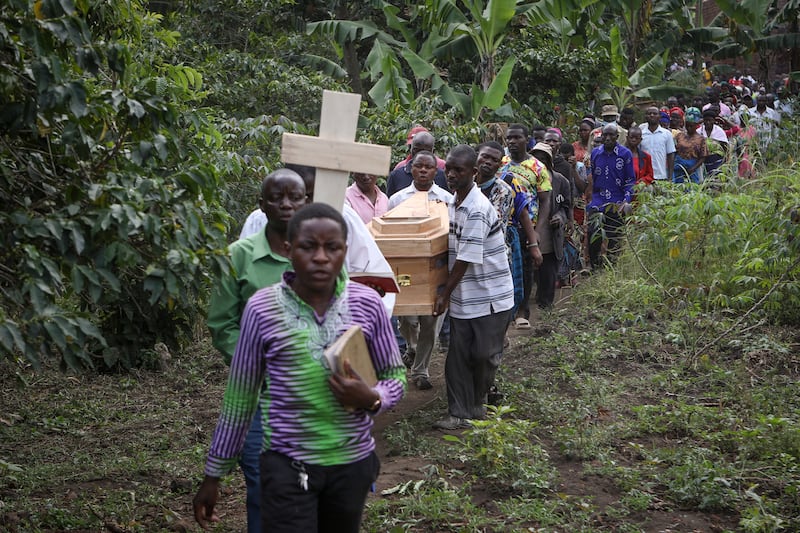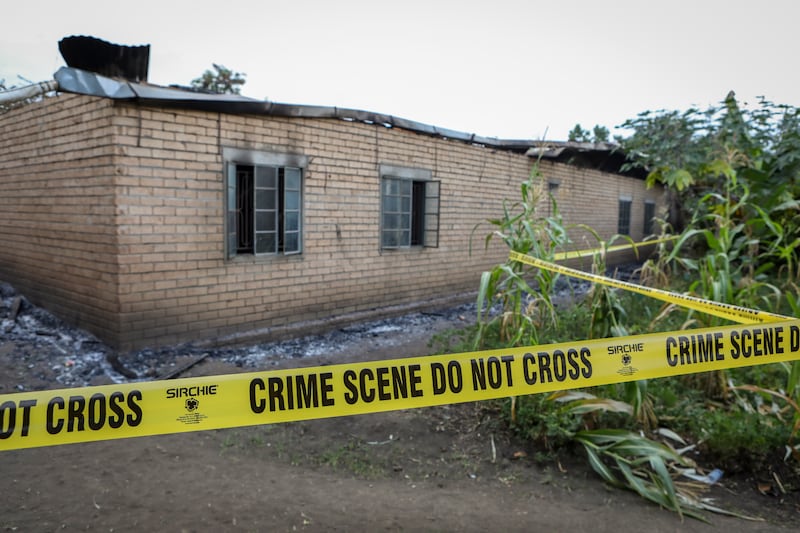The militants reached the private boarding school compound just before midnight, as students were going to bed, on a partly cloudy night in a small town in the lush western fields of Uganda.
First, they shot the school’s guard in the head before they went to the students’ dormitories. When they could not enter the boys’ locked residential halls, they hurled firebombs inside, setting mattresses ablaze and igniting a fire that soon engulfed the building, according to witnesses, government officials and security officers. Petrified, the girls unlocked their dormitory’s doors and tried to flee, only for the assailants to catch up with them and hack them to death with machetes.
When it was all over, the attack on Friday night in Mpondwe, a town near Uganda’s border with Congo, left 37 of the school’s 63 students dead, according to Janet Museveni, the country’s first lady and minister of education and sports.
The assailants, members of an Islamist militant group, also burned the school’s library, plundered a food store and kidnapped six students, whom they used to carry the looted goods, military officials said. As they fled the town into the dense forests of Congo, they killed three other people, including a woman in her 60s – bringing the death total to 41.
READ MORE
“The community is devastated and feeling so bad,” said Mumbere Jackson, who was attending a burial for some of the students on Sunday afternoon in the nearby town of Kajwenge. “Many are asking: where were the security forces? How did these people get here and commit this atrocity?”
The invasion of the Mpondwe Lhubiriha Secondary School was the deadliest terrorist act in Uganda in years, raising fears of resurgent militant activity in a region with a history of disruptive cross-border insurgencies.

The brutal attack made clear the reach and the continued strength of the Allied Democratic Forces, an insurgent group that has pledged allegiance to the Islamic State, and that the United States has designated a terrorist group.
“Attacking a school is likely part of a desire to recruit,” said Richard Moncrieff, the project director for the Great Lakes region at the International Crisis Group, “but also has a shock value, which appeals to the group’s wider jihadist audience”.
[ Video: Dozens dead in Ugandan school militant attackOpens in new window ]
The attack, he added, “shows that despite nearly two years of concentrated joint operations against the group, it still has significant capacity”.
It also highlighted the security challenges facing Uganda, even as its longtime president, Yoweri Museveni, deploys troops in conflicts across Africa and receives billions of dollars in development and military assistance from western countries, including the US.
Multiple attacks
Formed in 1995 in opposition to the rule of Museveni, the Allied Democratic Forces has carried out multiple attacks across Uganda, including one on a college in 1998 that killed 80 students. The Allied Democratic Forces has also assaulted communities across eastern Congo, a verdant, mineral-wealthy region blighted by decades of atrocities committed by dozens of armed groups.
In late 2021, the group set off explosions in the Ugandan capital, Kampala, killing three people. That attack prompted Museveni to launch a joint military campaign with Congo in an effort to drive the group out of its camps in eastern Congo. Yet the group has continued to recruit new soldiers into combat, some of them children, and to stage bloody raids, like one in March that killed 36 people in a village in North Kivu province in eastern Congo.
Observers have criticised the Ugandan and Congolese governments’ military approach in the region, saying that to bring lasting solutions, the governments need to focus on state-building and providing better economic opportunities.
“The attack shows that a wider strategy is needed than purely military,” Moncrieff said.

The Mpondwe Lhubiriha Secondary School was built by a nongovernmental organisation called Partnerships for Opportunity Development Association, led by a Canadian national named Peter Hunt. A nonprofit group, it works with local communities across Africa through projects including beekeeping, sewing and gardening projects.
On its website, the organisation said that the secondary school in Mpondwe was built in 2010 by a Ugandan crew and Canadian volunteers. The school served students mostly from the surrounding area, who were charged low fees and provided with textbooks and computers through grants.
[ Uganda prepares to bury victims after rebel attack on school leaves 42 deadOpens in new window ]
Ugandan education minister Janet Museveni said that auditors sent by the aid group to survey the school’s finances had left on Thursday, one day before the attack. She added that there had been conflict between the aid group that built the school and local groups in the district that had wanted to assume administrative control.
Efforts to reach the school administration and the aid group were not immediately successful.
For now, the town of Mpondwe continues to reel from the tragedy. As officials descended on the town on Saturday, security officers urged residents to remain calm and vowed to bring the perpetrators to account. Maj Gen Dick Olum, the commander of Uganda’s military operation in Congo, said in a news conference they were still looking for the six abducted students and had engaged some of the militants in a fight on Saturday.
Selevest Mapoze, the mayor of Mpondwe, said many residents in the poor farming community fled the town for fear of another attack. Others, he said, were camped at a mortuary waiting for the bodies of their loved ones or taking DNA tests to identify them.
“We are trying to convince them to come back because we are handling the security,” he said. “But it’s tough. The mood is heavy. A heavy silence has taken over the town.” – This article originally appeared in the New York Times




















